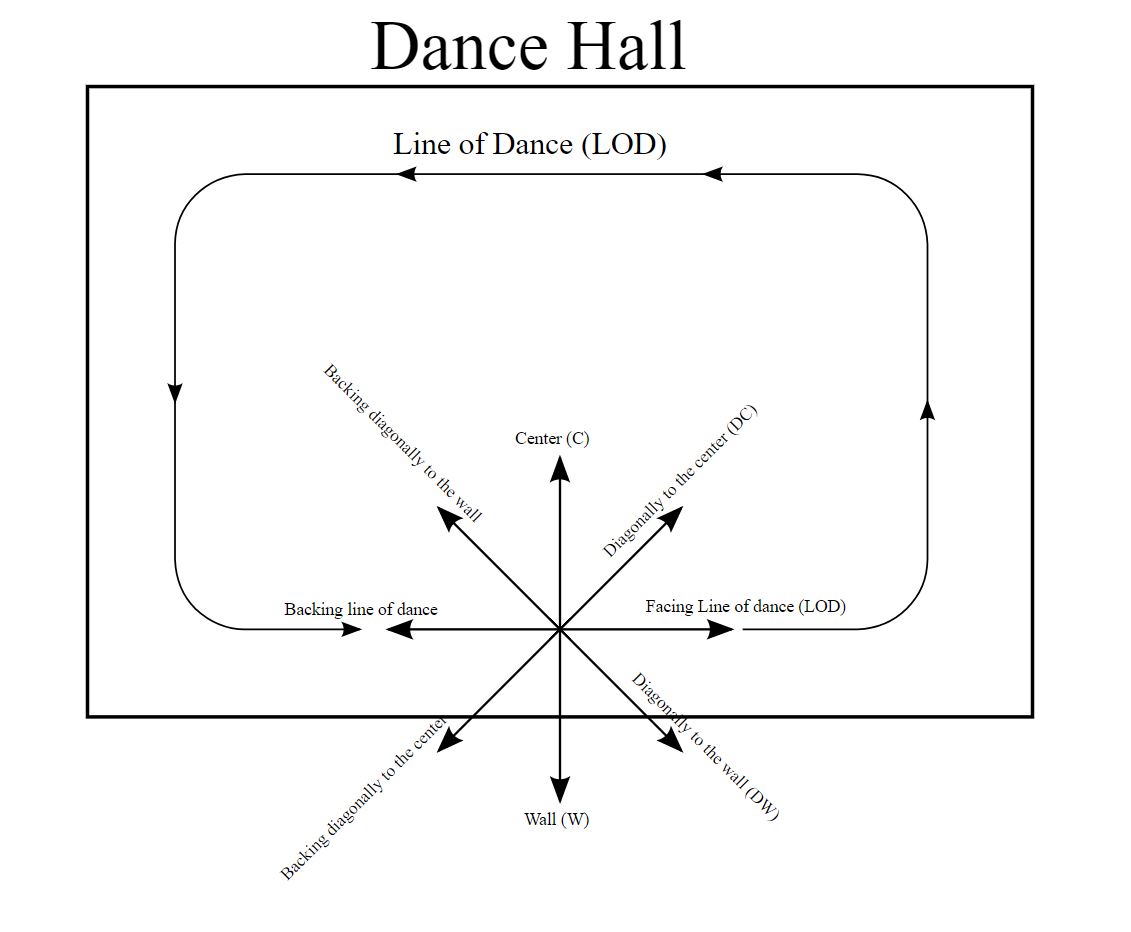Difference between revisions of "Line of Dance"
From Londonhua WIKI
(Created page with "=Line of Dance= {{Infobox |title = Line of Dance |header1 = Direction of Movement in Ballroom Dance |bodystyle = width:25em |image = File:Line of Dance.JPG|400px|alt=Artic...") |
|||
| Line 22: | Line 22: | ||
==Effective Use of the Line of Dance== | ==Effective Use of the Line of Dance== | ||
<br> | <br> | ||
| − | Because most dance halls are rectangular, it is useful for dancers to divide the ballroom into three general sections: The Long Walls, The Short Walls, and Corners. In each of these areas, dancers must continue to follow the line of dance, but may do so in different ways. When traveling down a long wall, a dancer may move toward the center of the floor, where the traffic is less dense, to complete more stationary movements. It is typical for short walls to be used exclusively for traveling movements. In corners, it is customary to perform either a direction-changing step or, because other dancers will be moving more slowly here, a stationary figure or pose. | + | Because most dance halls are rectangular, it is useful for dancers to divide the ballroom into three general sections: The Long Walls, The Short Walls, and Corners. In each of these areas, dancers must continue to follow the line of dance, but may do so in different ways. When traveling down a long wall, a dancer may move toward the center of the floor, where the traffic is less dense, to complete more stationary movements. It is typical for short walls to be used exclusively for traveling movements. In corners, it is customary to perform either a direction-changing step or, because other dancers will be moving more slowly here, a brief stationary figure or pose. |
<br><br> | <br><br> | ||
| + | |||
=References= | =References= | ||
<br> | <br> | ||
Revision as of 15:23, 11 May 2017
Line of Dance
 | |
| Direction of Movement in Ballroom Dance | |
|---|---|
| Credit: | Jiuka[1] |
Overview
Line of Dance (LOD) is the direction of movement followed by Ballroom dancers on the dance floor. The LOD forms a counter-clockwise pattern around the walls of the ballroom.
Contents
Background
Line of Dance is used to minimize collisions between couples on the floor[2]. The Line of Dance is followed in all progressive dances. Progressive dances, such as Waltz and Tango, are those that travel continuously around the floor. Progressive dances contrast with spot dances, such as Cha Cha and Jive, which are characterized by movements that do not leave a certain general area of the floor[3].
Effective Use of the Line of Dance
Because most dance halls are rectangular, it is useful for dancers to divide the ballroom into three general sections: The Long Walls, The Short Walls, and Corners. In each of these areas, dancers must continue to follow the line of dance, but may do so in different ways. When traveling down a long wall, a dancer may move toward the center of the floor, where the traffic is less dense, to complete more stationary movements. It is typical for short walls to be used exclusively for traveling movements. In corners, it is customary to perform either a direction-changing step or, because other dancers will be moving more slowly here, a brief stationary figure or pose.
References
- ↑ By Jiuka - Own work, Public Domain, https://commons.wikimedia.org/w/index.php?curid=9557205
- ↑ The Line of Dance. (n.d.). Retrieved May 11, 2017, from http://www.ballroomdancers.com/learning_center/Technique/LOD/
- ↑ The Line of Dance. (n.d.). Retrieved May 11, 2017, from http://www.ballroomdancers.com/learning_center/Technique/LOD/